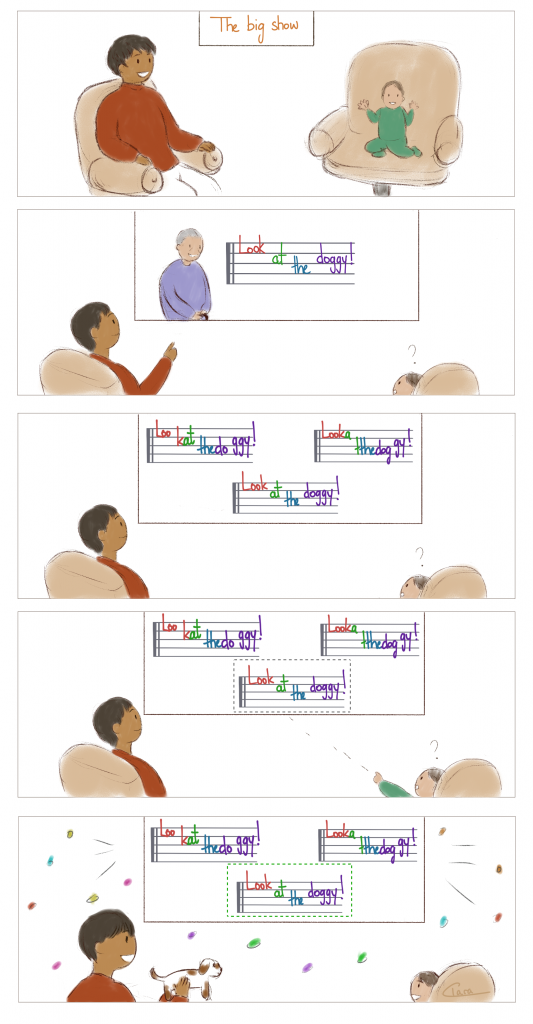How do babies start learning words?

At first glance, it can seem that one of the biggest challenges for learning language is figuring out what each word means. For example, learning that ‘dog’ means any furry animal that barks. We often overlook the challenge of first figuring out that when someone says something, like ‘furry dog’, ‘furry’ and ‘dog’ are words but not ‘rrydog’ or ‘og’. You may have already had the experience of mistakenly thinking that two words or part of a word was an actual word in one of your second languages. If you do not know the word ‘microphone’, you could think that it is actually two words, “my” and “crophone”. Yet, somehow, by 6 months of age babies have already figured out where some words begin and end, like ‘baby’ and ‘bottle’!
One of the cues young babies can use are ‘prosodic breaks’. These are breaks in the rhythm of language. A break in the rhythm can be a pause, so just some silence between words. For example, there is a pause between the words ‘birds’ and ‘sing’ in the sentence: ‘The birds sing in the morning’. Another kind of break can be a change in intonation. In English, for instance, there is a regular change in intonation on nouns: a ‘strong-weak’ stress pattern. You would say MOther, and not moTHER. Or the break could be part of a word that is stretched out. In some languages, like English, the last word of a sentence is longer than the rest. The word ‘there’ is longer when it is at the end of a sentence like in ‘Look over there’ than when it is not like in ‘There are so many birds in the sky’.
Prosodic breaks never happen in the middle of a word; rather they happen between words. A break would happen after the word ‘dino’ in the sentence ‘the dino roars’, but never after ‘din’. By listening to the changes in rhythm, babies can start figuring out where one word begins and another ends!
These breaks are just part of how we speak naturally so we are already giving a baby a helping hand learning language just by speaking to her! We may even sometimes exaggerate these breaks without noticing when we talk to babies (See our comic Why do we talk to babies the way we do?).
Join us next time when we uncover all the different kinds of rhythms babies use to learn language across the world.
The scientific sources of our comic:
